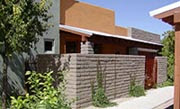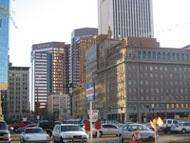 June 27, 1829 : SMITHSON'S CURIOUS BEQUEST. English scientist James Smithson dies after a long illness, leaving behind a will with a peculiar footnote. In the event that his only nephew died without any heirs, Smithson decreed that the whole of his estate would go to "the United States of America, to found at Washington, under the name of the Smithsonian Institution, an Establishment for the increase and diffusion of knowledge." Smithson's curious bequest to a country that he had never visited aroused significant attention on both sides of the Atlantic. Smithson had been a fellow of the venerable Royal Society of London from the age of 22, publishing numerous scientific papers on mineral composition, geology, and chemistry. In 1802, he overturned popular scientific opinion by proving that zinc carbonates were true carbonate minerals, and one type of zinc carbonate was later named smithsonite in his honor.
June 27, 1829 : SMITHSON'S CURIOUS BEQUEST. English scientist James Smithson dies after a long illness, leaving behind a will with a peculiar footnote. In the event that his only nephew died without any heirs, Smithson decreed that the whole of his estate would go to "the United States of America, to found at Washington, under the name of the Smithsonian Institution, an Establishment for the increase and diffusion of knowledge." Smithson's curious bequest to a country that he had never visited aroused significant attention on both sides of the Atlantic. Smithson had been a fellow of the venerable Royal Society of London from the age of 22, publishing numerous scientific papers on mineral composition, geology, and chemistry. In 1802, he overturned popular scientific opinion by proving that zinc carbonates were true carbonate minerals, and one type of zinc carbonate was later named smithsonite in his honor. His nephew indeed died without children, and on July 1, 1836, the U.S. Congress authorized acceptance of Smithson's gift. Two years later Diplomat Richard Rush set sail for home with 11 boxes containing a total of 104,960 gold sovereigns, as well as Smithson's mineral collection, library, and scientific notes. After the gold was melted down, it amounted to a fortune worth well over $500,000. After considering a series of recommendations, Congress agreed that the bequest would support the creation of a museum, a library, and a program of research, publication, and collection in the sciences, arts, and history. On August 10, 1846, the act establishing the Smithsonian Institution was signed into law by President James K. Polk. Today, the Smithsonian is composed of 19 museums, nine research centers throughout the United States and the world and the national zoo. John Smithson, the Smithsonian Institution's great benefactor, is interred in a tomb in the Smithsonian Building.




























